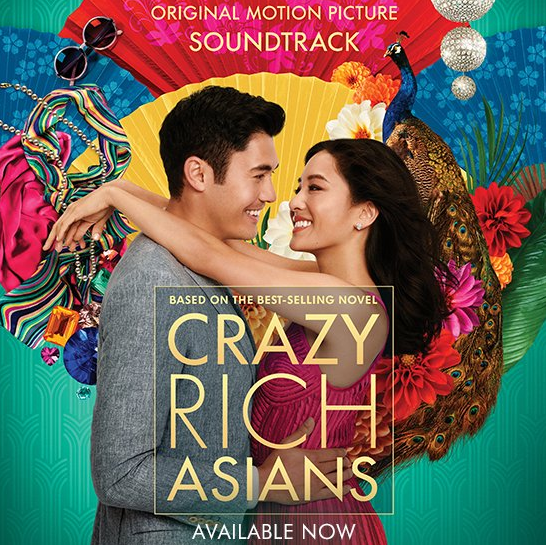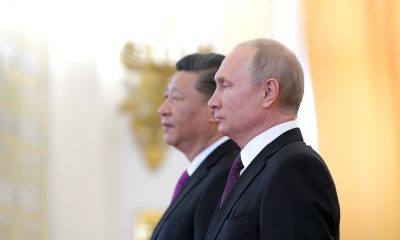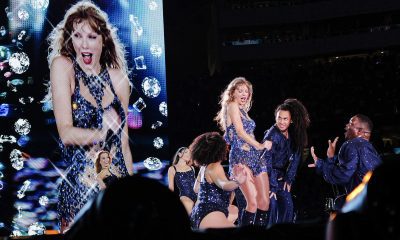Entertainment
‘Crazy Rich Asians’ a movie and a movement

Buck and actors of Asian descent had to wait decades for substantial Asian presence in Hollywood productions. (File Photo: Crazy Rich Asians/Twitter)
On the heels of the Afro-centric Black Panther (2018) comes Crazy Rich Asians, a sure summer hit. Based on Kevin Kwan’s entertaining novel, Crazy Rich Asians boasts an Asian director, screenwriter and a cosmopolitan, super-talented Asian cast.
The film marries familiar western tropes such as Cinderella meets the parents, or, in Chinese culture, The Dream of the Red Chamber, the renowned classic fiction of a sophisticated romantic love story set within noble families of 18th-century China — a Chinese version of Romeo and Juliet.
In Crazy Rich Asians, NYU economics professor Rachel Chu (Constance Wu, star of Fresh Off The Boat) accepts her boyfriend Nick Young’s (Henry Golding) seemingly innocuous invitation to attend his best friend’s wedding in Singapore, and at the same time meet his parents. It’s only on the plane, when the couple is suddenly escorted to first class, that Rachel senses Nick is wealthy.
Upon arrival in glamorous Singapore, Rachel meets the engaged couple, Araminta Lee and Colin Khoo (Sonoya Mizuno and Chris Pang), and then reunites with her pal, Peik Lin Goh (rap star Awkwafina). Goh’s nouveau-riche family breathlessly tells her that Nick is the most eligible bachelor in Asia and from one of Singapore’s oldest, wealthiest families.
Goh exclaims: “They are crazy rich!” That an economics professor would not have known this elementary fact about her boyfriend, especially in this age of instant communication, is a small flaw in the plot.
Everyone in Singapore knows about Rachel and Nick, however, thanks to Celine Lim (Constance Lau), also known as Radio One Asia, who spots the couple canoodling in New York City and sends a photo that travels instantly among a global network of young, agog Asians. Many of them, including Amanda Ling (Jing Lusi), are disappointed rivals for Nick’s affections and have their knives sharpened for the naive young professor.
More sympathetic is Nick’s fabulous cousin Astrid Leong Teo (Gemma Chan), a fashionista with marital problems. Fierce opposition comes from Nick’s mother, Eleanor (Michelle Yeoh), who finds the commoner unacceptable potential daughter-in-law material.
Yeoh’s effortless performance as the tradition-bound matriarch (her husband is perennially on a business trip) highlights old Singapore’s snobby rejection of the young American striver. The women’s intergenerational battle consumes most of the plot. I will not spoil the ending, though it is an American romantic-comedy, so be assured that all ends well.
The long struggle for Asian representation
In June 1945, Pearl S. Buck, the first female American Nobel laureate for literature and foremost interpreter of China, wrote to H. H. Kung, former financial minister of Republican China (and brother-in-law of the legendary Madam Chiang Kai-shek, first lady of China) to seek funds for her living Chinese Theatre.
Featuring actress Wang Yung, acclaimed “queen of modern Chinese drama,” Buck’s troupe, the author contended, “may mean the opening up of Hollywood to Chinese actors and actresses in Chinese plays, a project which I have long wanted to see accomplished.”
Buck had in mind her distaste for the “yellow faces” seen in Hollywood — casting white actors as Asians as seen in the 1937 award-winning screen adaption of her famous novel, The Good Earth, the first Hollywood feature film set in contemporary China. The casting director famously rejected Anna May Wong, America’s top actor of Chinese descent, citing Wong was “not Chinese enough.”
Buck longed for Hollywood’s acceptance of Wang and other talented Chinese actors. In my book manuscript, Arise, Africa! Roar, China!: Sino-African-American Citizens of the World in the Twentieth Century, I trace the dream of Buck and Wang for Hollywood and Broadway’s acceptance of talented Chinese actors presenting “authentic” modern China without Orientalist prejudices.
Buck and actors of Asian descent had to wait decades for substantial Asian presence in Hollywood productions.
Nancy Kwan starred in two films: The World of Suzie Wong (MGM, 1960), a lovely exploration of mixed-race love, and Flower Drum Song (1961), made by Universal Films with a terrific, largely Asian cast. Suzie Wong, despite a fine evocation of Hong Kong, sadly continued an earlier stereotype of the Asian woman as a prostitute.
Flower Drum Song portrayed Chinese immigrants as lowly beggars, including Kam Tong as Dr. Li, a Beijing University graduate, now a street musician. Despite highly favourable reviews and good box office returns, the pair of films stood alone for 30 years.
Move forward to 1993, as Hollywood Pictures presented the Joy Luck Club, a sensitive, brilliant portrayal of four Asian-American women and their convoluted relationships with traditional culture. Directed by Wayne Wang and derived from an Amy Tan novel, the film did well critically and at the box office.
After that, another lengthy hiatus occurred, interrupted only by the success of Asian productions, Crouching Tiger, Hidden Dragon (2001) and Memoirs of a Geisha (2005), neither produced in Hollywood. There have been promising signs, including the emergence of significant female stars like Lucy Liu and Sandra Oh, popular television shows like Fresh off the Boat, great comedy (the Harold and Kumar series 2004-2011) and occasional genre-busting independent films like Saving Face, (2004), demonstrating the wealth of top and repertory Asian theatrical talent.
First all-Asian cast in 25 years
It’s now 2018, and Crazy Rich Asians seems poised to be a critical and box office smash hit. Beyond the allure of the all-Asian cast, who seem on screen, even in dark moments, to joyfully exult in their achievement, the dynamic city-state of Singapore, and by extension, young, rich Asia, the film stuns the audience with its opulence. Despite the back-stabbing schemers and occasional oafish parvenu men, Singapore Chinese are portrayed as vibrant, wealthy and young. Women are gorgeous, male leads are genial hunks.
America, the dream world of past films, is perceived as an unacceptable, impoverished exile. The children in Goh’s family are sternly instructed to eat their chicken nuggets gratefully because “there are children starving in America.” Music ameliorates culture-crossing; the soundtrack consists of Canto pop, 1930s “yellow music” (Chinese adaption of Jazz) in Shanghai, and great Asian interpretations of Madonna and Elvis songs.
Director Jon M. Chu, cinematographer Vanja Cernjul and screenwriters Peter Chiarelli and Adele Lim use foundation shots to display Singapore as a glittery playground for the rich, who cavort on rooftop pools, plunge into the city’s extraordinary food markets or helicopter off to private beaches.
Their mansions, invariably shown at night in spectacular colour, are dream worlds. Fashion is the most constant desire. Everyone dresses expensively, from the tacky Goh family to the uptight family of Charlie Wu (Harry Shum, Jr.) and the cosmopolitan Astrid, the preferred customer for Parisian and Asian designers.
Astrid collects clothes and jewelry to assuage the pain of her failed marriage; she hides her million-dollar purchases from her husband. The jewelry is genuine; Chan had a bodyguard to protect against theft while wearing the baubles.
The film is unashamed of its excess. Indeed, that may be the point. Cosmopolitan rich Asians with complex humanities invoke China’s wealth during Marco Polo’s time, as suggested by the book.
It relives the power, material culture (extravagant clothing and cuisines), and traditional structures of the dominant noble families during late imperial China depicted in The Dream of Red Chamber. The detail of the heroine almost mistakenly drinking tea meant for hand washing in the film comes directly from that classical fiction.
Asian filmmakers have confidently created pure Hollywood escapism with a magnificent production and cast. That may not be what Pearl Buck envisioned in 1945, but it tells the world that Asia and Asian-Americans have arrived, and can produce magnificent films.
———
This article was originally published on The Conversation.





















